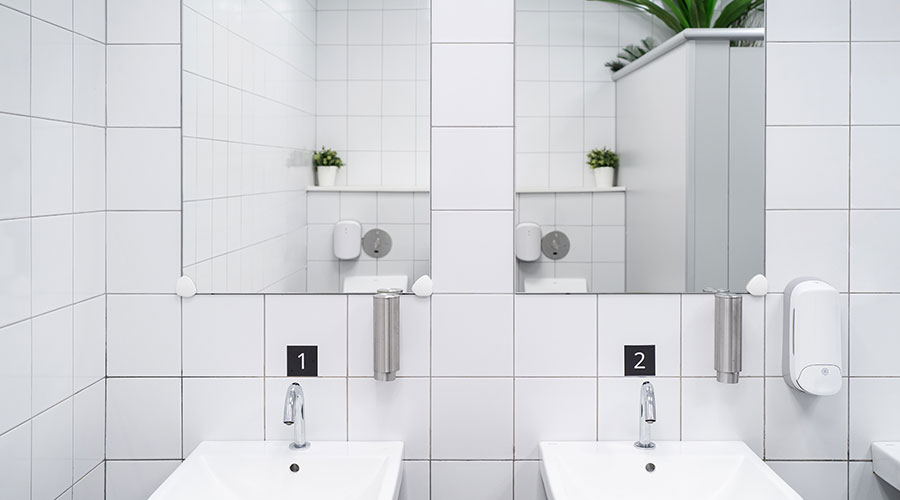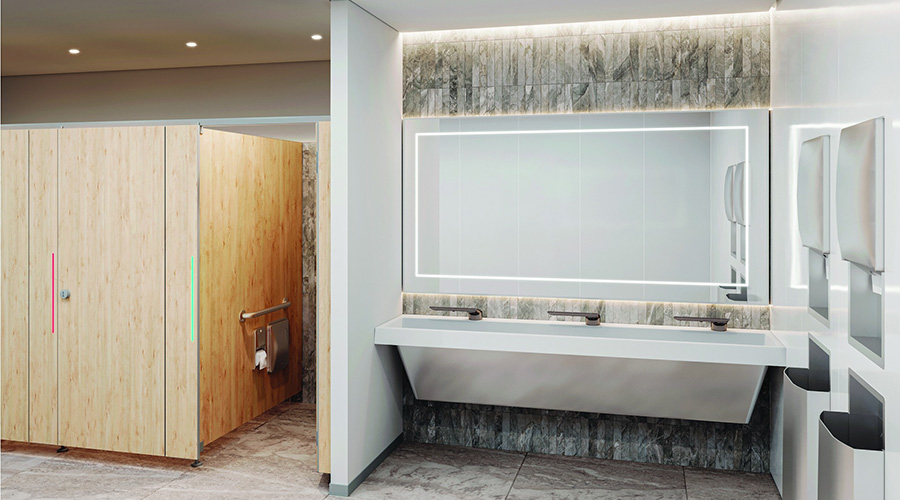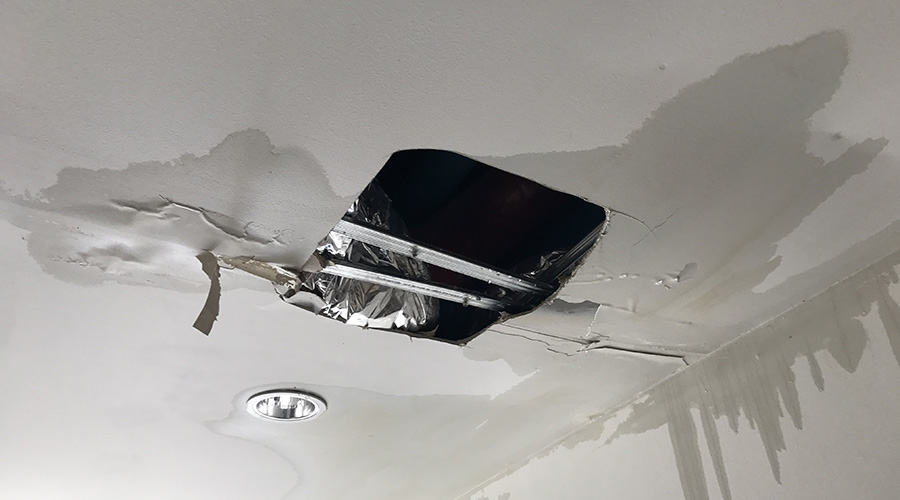Effective Plumbing Troubleshooting Involvement
One process that can be a valuable part of the daily maintenance routines for plumbing systems and components involves measuring, monitoring, reporting and recording. The first steps in effective troubleshooting involve knowing baseline flow readings, and monitoring, recording, and comparing the current readings.
If any of these readings are outside normal range, flush valves and faucets might not perform well, even though they are in perfectly good operating condition. Checking these readings first can save technicians a great deal of wasted time disassembling fixtures to look for non-existent problems, whether the problem is high or low pressure or flow volume.
Daily cleaning of the toilet seat, bowl, fixtures, and urinals is important to maintain an antiseptic, odor-free restroom. Housekeeping crews should use only soap and water — not harsh chemicals — on chrome fixtures, since harsh cleaners can quickly dull and damage the chrome.
In terms of specification, selecting standard fixtures reduces the inventory of replacement fixtures and parts kits, and it means less technician training, quicker repairs, fewer callbacks due to faulty repairs, and lower costs.
In facilities without flow meters, a flow-rate test as part of regular inspection and repair routes can save many thousands of dollars and conserve water. The test involves a container with the 1-gallon level marked on it. Using sink faucets — pre-1992 flow rate of 3 gpm or greater — as an example, the technician measures the time it takes to fill the container to the 1-gallon mark. If it takes 15 seconds, the flow rate is 4 gallons per minute.
Managers also can lower water use by replacing the aerator on the tap with a new one at a cost of a few dollars. The installation yields a new flow rate of one-half gpm. The flow is reduced by 3-1/2 gallons per minute.
Even if the valve operates just three minutes a day for 250 days per year, the annual savings from that level of operation would be more than 2,600 gallons. Ten faucets operating at that level would multiply the savings to 26,000 gallons.
In addition to resulting in lower water costs, this tactic saves on the electricity required to heat and pump the water, as well as on sewer rates. Reducing water use also reduces the load on the local water- and sewage-treatment plants. This approach can at least partly offset rate increases that are certain to come.
Why is that important? Take Chicago as an example. Like all cities, Chicago water and sewer rates have been increasing annually almost ever year since the 1990s. The combined rate has increased to $4.74 per thousand gallons in January 2012, and it will continue to increase every year to pay for a multi-billion dollar infrastructure upgrade of the 100-year-old system.
In January 2015, the rate will be $7.64 — a 61 percent increase in three years. Many cities, especially those in the more arid parts of the country, already have much higher rates, due to water shortages. Water savings are even more valuable in these locations.
By keeping in communication with plumbing-hardware vendors online, through their onsite visits, and trade show attendance, managers will be better able to stay up to date with the ever-changing technology behind plumbing products, regulatory developments, and maintenance procedures.
Thomas A. Westerkamp is a maintenance and engineering management consultant and president of the work management division of Westerkamp Group LLC.
Related Topics:














